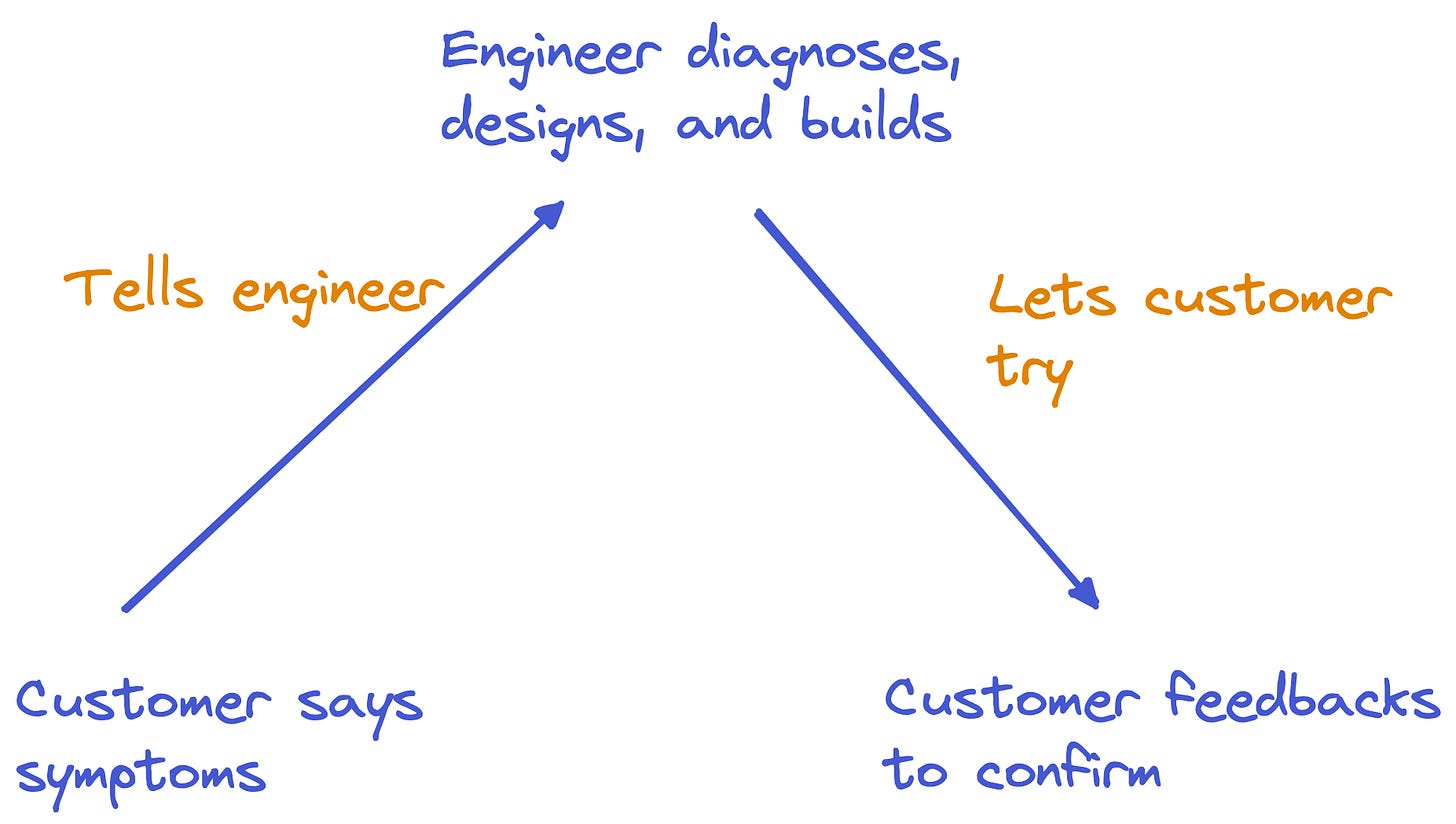Three different sources each talking about a different pattern, and yet all three patterns seem to suggest a meta pattern that’s also triadic.
The Prestige 🎬
The pattern as described by the screenplay
Every great magic trick consists of three parts or acts.
The first part is called "The Pledge". The magician shows you something ordinary: a deck of cards, a bird or a man. He shows you this object. Perhaps he asks you to inspect it to see if it is indeed real, unaltered, normal. But of course... it probably isn't.
The second act is called "The Turn". The magician takes the ordinary something and makes it do something extraordinary. Now you're looking for the secret... but you won't find it, because of course you're not really looking. You don't really want to know. You want to be fooled. But you wouldn't clap yet. Because making something disappear isn't enough; you have to bring it back.
That's why every magic trick has a third act, the hardest part, the part we call "The Prestige.
Diagramming it might make it more digestible
Pattern Language as Explained by Ryan Singer 🤟
Ryan Singer gave a talk about Christopher Alexander’s Pattern Language. Which is nicely summarized by Edo Van Royen. Specifically this part that I’m quoting.
I’m quoting the words exactly, but I’m rearranging the points to make my point.
We make this arc: Concrete -> Abstract -> Concrete.
…we have a problem, because we have to coordinate a whole bunch of actions, and enable a lot of small decisions to get to the part where we have a new design that works better. So we go up to the abstract level of the pattern language to try and specify what we think we can do..
From that we generate a possible solution at the concrete level. Then we can judge if it achieves the fit we want.
At the abstract level there's no tradeoffs. But at the concrete level we are going to run out of time. We are going to bump into the reality of things. The concrete is the level where we look to find fit.
The fit comes from where the rubber meets the road, the concrete level. Like the real physical balcony that's too small and the context of people wanting to do things on it.
Again, diagramming it out, I get
The Master and His Emissary 📕
In the book The Master and his Emissary by Iain McGilchrist
the hierarchy of attention, for a number of reasons, implies a grounding role and an ultimately integrating role for the right hemisphere, with whatever the left hemisphere does at the detailed level needing to be founded on, and then returned to, the picture generated by the right. This is an instance of the right → left → right progression which will be a theme of this book. And it lies at the very foundation of experience: attention, where the world actually comes into being.
The right hemisphere sees the whole, before whatever it is gets broken up into parts in our attempt to ‘know’ it. Its holistic processing of visual form is not based on summation of parts. On the other hand, the left hemisphere sees part-objects.
The process is not a gradual putting together of bits of information, but an ‘aha!’ phenomenon – it comes all at once.
Once again, diagramming it out, I get:
Triadic Pattern for Making Stuff People Want
My own reflection is that this triadic pattern also makes a lot of sense for an entrepreneurial engineer.
Also, this pattern is also fractal by nature. Each stage might contain smaller, multiple cycles of conversation → build → feedback.
My personal weakness looking back is in the last leg. What Ryan Singer says about making the abstract solution work within the constraints of concrete reality. No wonder the movie Prestige calls it, “the hardest part”.
Some specific mistakes I have made in the past and how I would advise my younger self.
Mistake 1: Take what the customers say too literally
Solution: Take what customers say seriously, but not literally. Think like a doctor, not a waiter.
You still have to interpret what they say. Diagnose what’s the root cause. And then need to take into account various factors that might affect your suggested solution.
Just because two patients have the same root cause, they do NOT automatically have the same treatment. One may be a healthy 30 year old woman. The other might be an aging 95 year old man.
Think like a doctor.
Mistake 2: Try to solve everything in 1 cycle
Solution: The solution is just don’t. And not to have any expectations to do in 1 cycle.
This should really be its own separate article. Whenever I try to solve everything at once, I get frustrated when the customer inevitably points out in the feedback further changes that are required.
It’s almost like figuring out what are really the true MUST HAVE features versus what the customer thinks are the MUST HAVE features is itself a separate problem from solving the problem.
Mistake 3: Aiming for efficiency and elegance before effectiveness
Solution: Effective, efficient, elegance. In that order.
Very much related to second mistake.
It’s crucial to first solve the problem before optimizing your solution on any other desirable dimensions like speed and beauty.


I wish someone said all this to me earlier in my career. Since there’s no time machine, I’m choosing to write this down both as a reminder and as a warning for people just two steps behind me.







